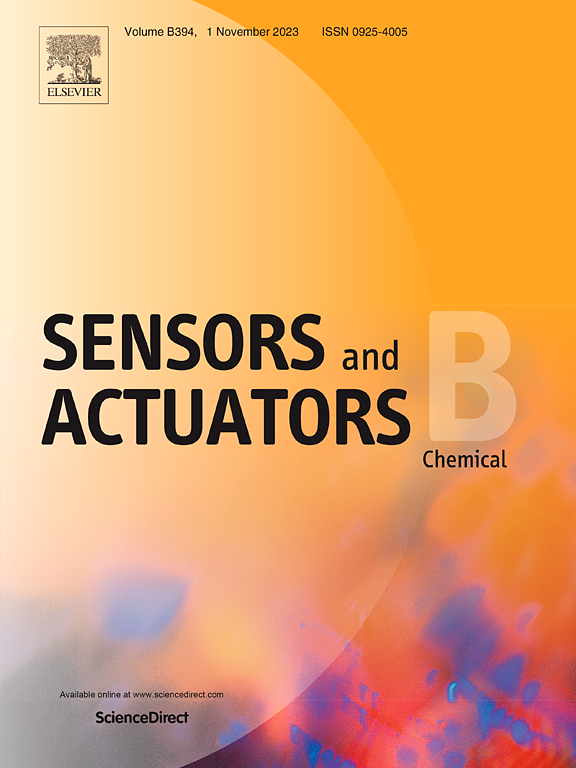A Facile Aptasensor Based on Au Dimers and Carbon Dots for SERS/Fluorescence Dual-Mode Detection of AFB1
IF 8
1区 化学
Q1 CHEMISTRY, ANALYTICAL
引用次数: 0
Abstract
A dual-signal aptasensor that integrates Surface-Enhanced Raman Scattering (SERS) and fluorescence has been developed for the sensitive detection of aflatoxin B1 (AFB1). 2,2'-bipyridine ethylene (BPE) linked to gold nanoparticles (AuNPs) through "Au-N" bonds formed Au dimers with nanogaps. These were functionalized with complementary DNA (cDNA) of the AFB1 apt, serving as both a Raman signal probe and a fluorescence quencher. The Fe3O4@SiO2-carbon dots (CDs), modified with the AFB1 apt, functioned as a fluorescent magnetic substrate facilitating efficient separation. The components assembled into a satellite-like structure, which maximized SERS signals while simultaneously quenching fluorescence. Upon the addition of AFB1, the Raman probe was released, leading to a reduction in SERS signals and recovery of fluorescence. The sensor demonstrated an extensive linear detection range from 10⁻⁴ to 10² ng/mL, accompanied by an ultra-low limit of detection (LOD) of 0.066 pg/kg. Spiked recovery rates in peanut, rice, and corn samples ranged from 100.35% to 109.75%, indicating high accuracy and applicability for AFB1 detection in real-world samples.

基于金二聚体和碳点的简易适体传感器SERS/荧光双模检测AFB1
建立了一种结合表面增强拉曼散射(SERS)和荧光的双信号适体传感器,用于黄曲霉毒素B1 (AFB1)的灵敏检测。2,2'-联吡啶乙烯(BPE)通过Au- n键与金纳米粒子(AuNPs)连接,形成具有纳米间隙的金二聚体。它们被AFB1 apt的互补DNA (cDNA)功能化,作为拉曼信号探针和荧光猝灭剂。用AFB1 apt修饰的Fe3O4@SiO2-carbon点(CDs)作为荧光磁性底物,促进有效分离。这些组件组装成一个类似卫星的结构,在最大限度地提高SERS信号的同时熄灭荧光。加入AFB1后,拉曼探针被释放,导致SERS信号减少,荧光恢复。该传感器显示出从10⁻到10²ng/mL的广泛线性检测范围,并伴随着0.066 pg/kg的超低检测限(LOD)。花生、大米和玉米样品的加标回收率为100.35% ~ 109.75%,表明该方法在实际样品中具有较高的准确性和适用性。
本文章由计算机程序翻译,如有差异,请以英文原文为准。
求助全文
约1分钟内获得全文
求助全文
来源期刊

Sensors and Actuators B: Chemical
工程技术-电化学
CiteScore
14.60
自引率
11.90%
发文量
1776
审稿时长
3.2 months
期刊介绍:
Sensors & Actuators, B: Chemical is an international journal focused on the research and development of chemical transducers. It covers chemical sensors and biosensors, chemical actuators, and analytical microsystems. The journal is interdisciplinary, aiming to publish original works showcasing substantial advancements beyond the current state of the art in these fields, with practical applicability to solving meaningful analytical problems. Review articles are accepted by invitation from an Editor of the journal.
 求助内容:
求助内容: 应助结果提醒方式:
应助结果提醒方式:


